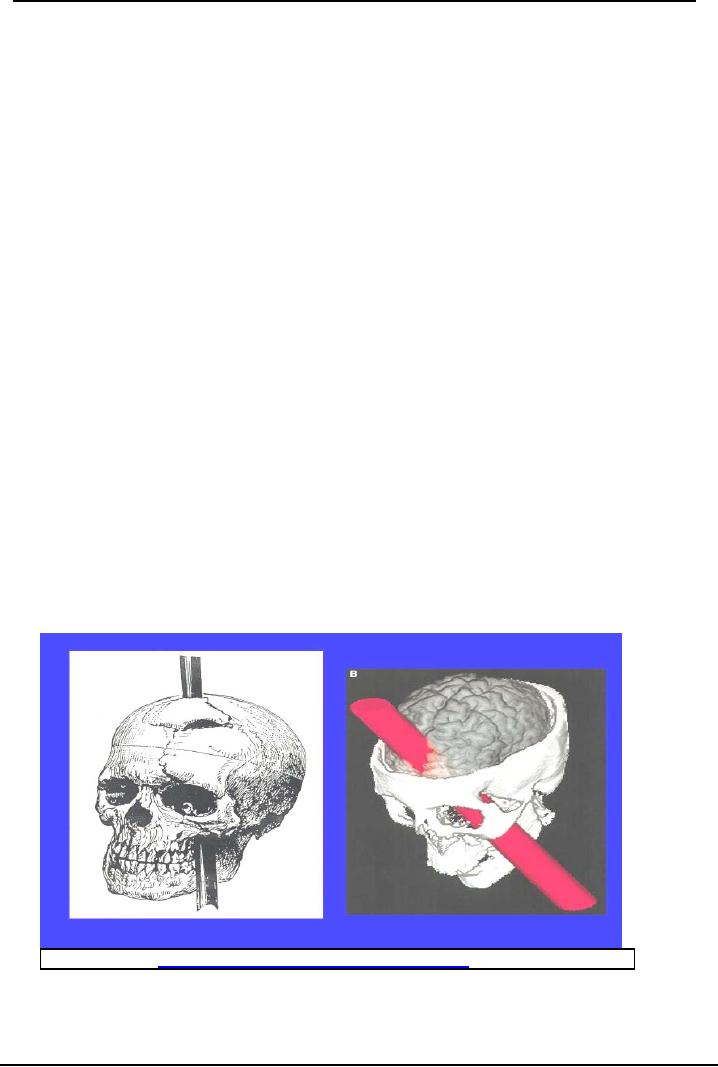 |
SUB-SPECIALIZATIONS WITHIN THE BEHAVIORAL NEUROSCIENCES |
| << BRIEF HISTORICAL REVIEW:Roots of Behavioural Neurosciences |
| RESEARCH IN BEHAVIOURAL NEUROSCIENCES:Animal Subjects, Experimental Method >> |

Neurological
Basis of Behavior (PSY -
610)
VU
LESSON
03
SUB-SPECIALIZATIONS
WITHIN THE BEHAVIORAL
NEUROSCIENCES
Objectives
�
This
would elaborate the characteristics of
research in behavioral
neuroscience.
�
This
would elaborate on the understanding of
various sub-specializations within the
behavioral
neurosciences
which contribute to the understanding of
brain and behavior relationship
and how
each
relates to the other
areas.
According
to Pinel (2002) the major
areas of behavioral neuroscience
research are multiple but
they
have
some of the following
characteristics:
Range:
The
range subjects whose behavior
has been studied through
natural or experimental
work
includes
all organism: animals to humans. In
some cases the studies have
been carried out on
simple
cellular
mechanism.
Controls:
They
vary from extreme to naturalistic (as we have discussed
earlier).
Research:
It can be pure or applied. Research should be done purely to understand
behaviors and to
develop
theories and it should have no practical implications. This is known as
pure
research. On
the
other
hand research is considered to be meaningful only if there are practical
implications coming out of
research
data. Suck kind of research is known as applied
research. Sometimes the lines are
not dividing
these
areas but applied research can lead to pure research and
Vice-versa.
Approach:
It
can either be experimental or Clinical. Sub specializations differ in what they
are studying
and
if it involves applied clinical practice or not. Some areas such as
psychobiology focus exclusively
on
laboratory, experimental work whereas neuropsychology has a strong clinical
focus.
The
major subdivisions of Behavioral Neurosciences are as
follows:
�
Physiological
Psychology: Studies the
neural modulates of behavior through
direct
manipulation
of the brain, using controlled
experimental settings. The manipulation
of the
Nervous
system can be through
surgical, electrical or chemical means
and these are carried
out
primarily
on animals. The formal experimentation is
carried out with strictest
control of
variables.
Use of human subjects is eliminated
(not allowed, for ethical
reasons even animal
experimentation
has a strict code). This is an
area which focuses on
identifying variables,
creating
theoretical frameworks rather than
producing applied oriented
results. Pure research
is
a
priority. It may or may not
have an applied implication
later.
�
Psychopharmacology:
Earlier
psychopharmacologists were also researchers in
physiological
psychology;
the lines were diffuse and
not bifurcated. The two
disciplines are still quite
similar.
However,
the experimentation under strict
control conditions may have a
different focus--one
is
more interested in neural activity and
interaction of drugs and the other with
neural activity
and
its influence on behavior.
Psychopharmacology, as specialization,
focuses primarily on
identifying
the effects of the exogenously created
substances on behavior. Pure
research carried
out
is on laboratory animal subjects,
however, at a more advanced level of
testing human
volunteers
are also included in the studies,(
clinical or patients suffering from
the
psychopathology
for which a drug has
been developed), however, there
are stringent
procedures
for
doing this kind of
experimentation. The
Psycho-pharmacological research can be
both pure
and
applied. Pure
when we are testing out
these substances to develop a
theoretical model or
framework.
As an example "SPEED" or amphetamines
are abused as stimulants,
chronic use
of
these leads to a psychotic
like state. Since amphetamines
increase release of
dopamine
thereby
increasing its levels in the brain,
this has formed basis
for developing
dopaminergic
10

Neurological
Basis of Behavior (PSY -
610)
VU
hypothesis
of schizophrenia. The research in Psychopharmacology
becomes APPLIED when
a
drug
is developed for therapeutic
use in clinical setting.
Many drugs being used as
psychotropic
drugs
were developed in the laboratories ( and
are still being developed
through
psychopharmacological
studies). This has contributed
immensely to the understanding of
how
brain
works with exogenous chemicals
through the neurotransmitter
changes.
�
Comparative
psychology
This
is an area which is more related to
biopsychology, or psychobiology,
ethological, ecological,
evolutionary
basis of behavior. The
studies in this area can
range from naturalistic
studies such as
those
of Konrad Lorenz, (Imprinting in
birds) and Niko Tinbergen (aggression in
the red stickle
back
fish) and Jan Goodall
(Chimpanzee studies carried out in the
jungle) to laboratory
investigations,
(creating a model of attachment of animals as in
the case of Harlows studies
on
rhesus
monkeys and chimpanzees at the Wisconsin Primate Center).
The focus can be
micro
(where
we can compare cells, parts of
the brain and their
functioning)- to macro and holistic
(
which
is extended to animal families, social
and group behavior:
specially studies on
pheromonal
signals
have carried out extensive
free roaming animals social
behavior studies). Some
researcher
focus
on the phyletic difference in behavior
while others focus on higher
order behaviors.
Comparative
psychology studies similarities
and differences in animal
behaviors. Thus simply
put,
it studies and compares behaviors
across species and across
animal kingdom.
�
Neuropsychology
This
is the study of behavioural deficits
which result from human
brain damage. The focus of
area is
mainly
the highly developed cerebral cortex,
(neocortex) in humans. It is not possible
to create
lesions
or damage brain to see the
aftereffects, therefore this
discipline uses:
a) Case
studies of patients
who have suffered some
damage or trauma (stroke, deficits- as
an
example
we have two famous cases: Phineas Gage,
and H.M), to identify the relationship
between
the
brain areas and the
functioning. These two cases
will be discussed in detail in
later chapters but
the
case of Phineas Gage is famous as it
showed that damage to the
orbito-frontal area led
to
personality
change, and the case of HM is famous as
he lost the ability to store
memories after
brain
surgery, he lives in short term
memory.
Fig
3.1 Source :
www.brown.edu/.../py47/diagrams/phineas.jpg
Fig
3.1 shows phineas gage:
reconstruction from his
damaged skull showed
extensive damage to the
orbitofrontal
cortex.
11

Neurological
Basis of Behavior (PSY -
610)
VU
b)
Co-relational
studies
of damage/deficits resulting from surgery
lesions. Extensive Tests are
given
to identify the deficits and then
these are correlated with
the damage reported by the
neurologist,
or surgeon or the other advanced
technologies (such as MRI,
PET scan etc).
In
addition, the following are the
areas which define
neuropsychology as a speciality.
Neocortex:
The focus of Neuropsychology is mainly on
the neocortex, the association and
other
higher
order functions, but this is
not necessarily true. Neuropsychologists
do assess sensory
motor
functioning
involving the lower order
brain areas as well.
Applied:
Neuropsychology
has a very strong applied focus, where
neuropsychological assessments
are
essentially done to understand the deficits-
with the aim of localizing
deficits to help the
patient.
The
aim of this discipline is to
identify, provide diagnosis of the area
of deficit with the
specific
goal
of care counseling and developing
rehabilitation strategies to help the
patients.
Non
Invasive: This is
non-invasive specialization we do not
damage brains or insert tubes
within
the
brain to test the patient. We
use tests and extrapolate
functioning on the basis of performance
on
the
test (paper pencil, construction,
memory etc).
Controls
Vs Flexibility: The
neuropsychological approach can vary
form extremely controlled
to
flexible
testing. There is a strong school of
thought within the discipline
which believes in
flexibility
of testing and assessment
(especially considering that we
are testing brain
damaged
patients).
The father of this
discipline Luria (Russian
Neurologist) did not believe
in
standardization,
but qualitative assessment and keen
observation. The American school
believes in
strong
standardized and controlled conditions of
testing and responses.
�
Psychophysiology
-mStudies
the relationship of physiology and
behavior by recording the brain and
body
electrophysiological
responses both in animal and
human subjects. In humans, Scalp
electrodes are
placed
on surface of scalp to measure
electroencephalographic changes (EEG) on
muscles, eye
movement,
skin to measure electromyographic
activity, electro-oculographic activity,
and
electrodermal
changes(EMG,EOG EDR). Psychophysiological
measures also include
autonomic
measures
such as GSR, heart rate, B.P. Pupil
dilation etc.
This
is Non- invasive, can be
applied or even pure research such as
sleep research which uses
EMG,
EOG
and EEG recordings. We also have
single cell recordings, event
related potentials.
Further,
electrophysiological
recordings can be made of one cell or a
large group of cells for an
orchestrated
response.
�
Cognitive
neurosciences
It
is the newest and most exciting, and the most active of the sciences.
Cognitive
neuroscience
brings
together scientist from cognitive sciences (mathematicians, physicists, computer
scientists
who
build theoretical models) life sciences (biochemists, biologists, chemists, who
actively work to
identify
living tissue and functional correlates) and cognitive psychologists. It has
emerged as a
distinct
enterprise only recently and has been driven by methodological advances that
enable the
study
of the human brain safely in the laboratory.
Cognition is defined as the neural
basis of higher
intellectual
functioning such as memory, thought, perceptions, attention, judgment,
imagination,
creativity,
speech and language, action, foresight and planning.
Very
interesting issues are part
of research in cognitive neurosciences
such as how information
is
stored,
processed and retrieved. Is there
multistage or parallel processing of
information,
mathematical
and computer modeling of how neural
networks are formed
etc.
12

Neurological
Basis of Behavior (PSY -
610)
VU
This
is mainly non-invasive. Using techniques such as functional imaging (which
measures ongoing
behavior).
This is more exciting as technology develops; therefore this specialization is
essentially
interdisciplinary.
In
summary, all approaches work in
conjunction with each other,
to formulate theory and to test
it.
Experiments
from Physiological Psychology
can be complemented by applied work
in
Neuropsychology
and vice-versa
Reference
Pinel,
John P.J. (2003) Biopsychology
(5th edition) Allyn and Bacon;
Singapore
13
Table of Contents:
- INTRODUCTION:Descriptive, Experimental and/ or Natural Studies
- BRIEF HISTORICAL REVIEW:Roots of Behavioural Neurosciences
- SUB-SPECIALIZATIONS WITHIN THE BEHAVIORAL NEUROSCIENCES
- RESEARCH IN BEHAVIOURAL NEUROSCIENCES:Animal Subjects, Experimental Method
- EVOLUTIONARY AND GENETIC BASIS OF BEHAVIOUR:Species specific
- EVOLUTIONARY AND GENETIC BASIS OF BEHAVIOUR:Decent With Modification
- EVOLUTIONARY AND GENETIC BASIS OF BEHAVIOUR:Stereoscopic vision
- GENES AND EXPERIENCE:Fixed Pattern, Proteins, Genotype, Phenotypic
- GENES AND EXPERIENCE:Mendelian Genetics, DNA, Sex Influenced Traits
- GENES AND EXPERIENCE:Genetic Basis of behavior, In breeding
- GENES AND EXPERIENCE:Hybrid vigor, Chromosomal Abnormalities
- GENES AND EXPERIENCE:Behavioral Characteristics, Alcoholism
- RESEARCH METHODS AND TECHNIQUES OF ASSESSMENT OF BRAIN FUNCTION
- RESEARCH METHODS AND TECHNIQUES OF ASSESSMENT OF BRAIN FUNCTION:Activating brain
- RESEARCH METHODS AND TECHNIQUES OF ASSESSMENT OF BRAIN FUNCTION:Macro electrodes
- RESEARCH METHODS AND TECHNIQUES OF ASSESSMENT OF BRAIN FUNCTION:Water Mazes.
- DEVELOPMENT OF THE NERVOUS SYSTEM:Operation Head Start
- DEVELOPMENT OF THE NERVOUS SYSTEM:Teratology studies, Aristotle
- DEVELOPMENT OF THE NERVOUS SYSTEM:Stages of development, Neurulation
- DEVELOPMENT OF THE NERVOUS SYSTEM:Cell competition, Synaptic Rearrangement
- DEVELOPMENT OF THE NERVOUS SYSTEM:The issues still remain
- DEVELOPMENT OF THE NERVOUS SYSTEM:Post natal
- DEVELOPMENT OF THE NERVOUS SYSTEM:Oxygen level
- Basic Neuroanatomy:Brain and spinal cord, Glial cells, Oligodendrocytes
- Basic Neuroanatomy:Neuron Structure, Cell Soma, Cytoplasm, Nucleolus
- Basic Neuroanatomy:Control of molecules, Electrical charges, Proximal-distal
- Basic Neuroanatomy:Telencephalon, Mesencephalon. Myelencephalon
- Basic Neuroanatomy:Tegmentum, Substantia Nigra, MID BRAIN areas
- Basic Neuroanatomy:Diencephalon, Hypothalmus, Telencephalon, Frontal Lobe
- Basic Neurochemistry:Neurochemicals, Neuromodulator, Synaptic cleft
- Basic Neurochemistry:Changes in ionic gates, The direct method, Methods of Locating NT
- Basic Neurochemistry:Major Neurotransmitters, Mesolimbic, Metabolic degradation
- Basic Neurochemistry:Norepinephrine/ Noradrenaline, NA synthesis, Noadrenergic Pathways
- Basic Neurochemistry:NA and Feeding, NE and self stimulation: ICS
- Basic Neurochemistry:5HT and Behaviors, Serotonin and sleep, Other behaviours
- Basic Neurochemistry:ACH and Behaviors, Arousal, Drinking, Sham rage and attack
- Brain and Motivational States:Homeostasis, Temperature Regulation, Ectotherms
- Brain and Motivational States:Biological Rhythms, Circadian rhythms, Hunger/Feeding
- Brain and Motivational States:Gastric factors, Lipostatic theory, Neural Control of feeding
- Brain and Motivational States:Resting metabolic state, Individual differences
- Brain and Motivational States:Sleep and Dreams, Characteristics of sleep
- Higher Order Brain functions:Brain correlates, Language, Speech Comprehension
- Higher Order Brain functions:Aphasia and Dyslexia, Aphasias related to speech
- Higher Order Brain Functions:Principle of Mass Action, Long-term memory
- Higher Order Brain Functions:Brain correlates, Handedness, Frontal lobe